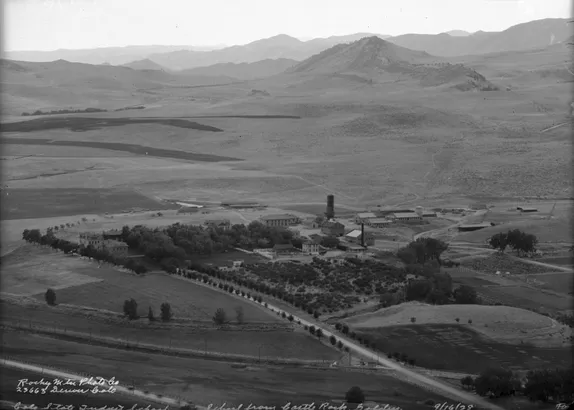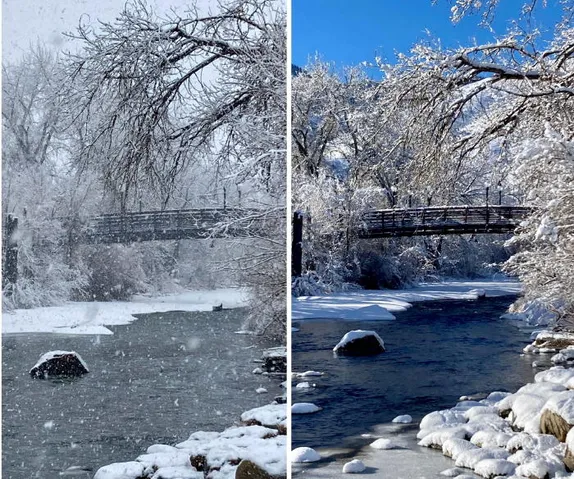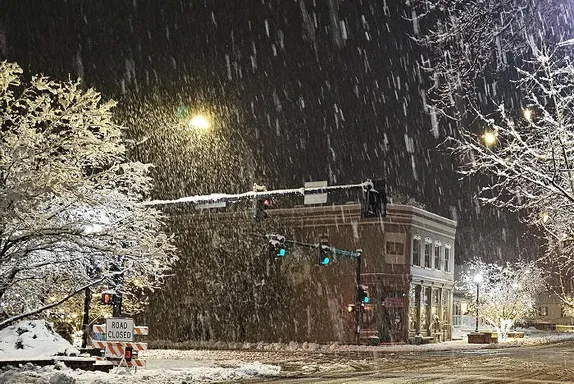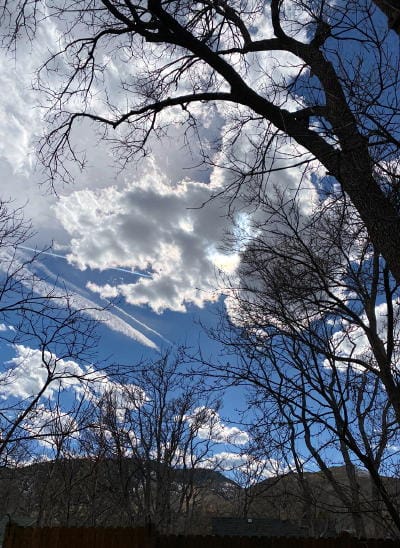
Real World Events

10AM-3PM Brunch at the Rose @ Buffalo Rose
12-4PM Prom Swap @ Golden Library

3PM Jefferson Symphony Young Artists Concert @ Colorado School of Mines
Live Music
2-6PM Second Time Around @ Wrigley’s
3-6PM Meat & Potatoes Jazz Orchestra @ Over Yonder
4-7PM Kyle O’Brien @ Buffalo Rose (Sky Bar Stage)
5:30PM Brian Hornbuckle Band @ Dirty Dogs Roadhouse
11AM William Topley – Solo Acoustic Brunch @ Buffalo Rose (main venue)
8PM Karaoke @ Ace Hi Tavern
Golden History Moment

Coal-Mine Fire in Golden: 1879-1889
by Donna Anderson
With the recent Marshall Fire and its possible cause from a historic and ongoing coal-mine fire, a question arises about legacy coal-mine fires in Golden. The short story is that Golden did have a coal-mine fire 280 feet below the ground in the White Ash Mine, located below what is now the Colorado School of Mines athletic fields. That fire burned from 1879 to 1889 and only was extinguished by the White Ash Mine Disaster of 9 September 1889 in which 10 coal miners drowned. No other coal-mine fires have ever been reported in Golden. The longer story unfolds below.
First, a little bit about coal-mine fires. Coal can spontaneously combust when exposed to air (oxygen). Most methods for extinguishing coal fires rely on eliminating the air supply. But, once begun, the fires are very difficult to put out, because coal left behind in an abandoned seam provides an almost infinite fuel supply. The coal workings also tend to remain exposed to air by holes reaching the ground surface. The Marshall coal-mine fire, for example, started around 1870, according to the State Coal Mine Inspector’s report of 1884 (WEBSITE BELOW). Today, Colorado is home to 38 active coal-mine fires, including that of the Marshall Mine south of Boulder.
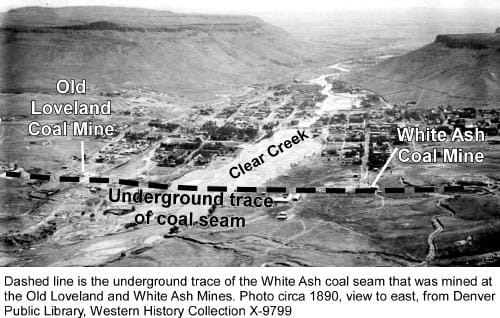
Coal-mine workings in central Golden were located along a vertical coal seam trending north-south below ground (see PHOTO). The seam, known as the White Ash coal seam, extended from near 19th Street, across the site of today’s Mines athletic fields, under Clear Creek, and past today’s Mitchell Elementary School. It had been mined in the Old Loveland Mine (originally called the Black Diamond Mine) on the north side of Clear Creek starting in 1869. The Old Loveland Mine was abandoned in 1879 and allowed to fill with ground water seeping from overlying Clear Creek.
The White Ash Mine opened in 1874 on the White Ash coal seam. In 1879, as the White Ash Mine was deepened, a coal fire broke out at the 280-foot level on the northern part of the crosscut (see CROSS SECTION). Miners sealed off the opening to that crosscut, aiming to cut off the air supply to the fire. No further problems were reported regarding that fire. However, on 9 September 1889, water from the flooded Old Loveland Mine to the north (see PHOTO above and CROSS SECTION below) broke through the pillar of coal and rock that separated the two mines at the 280-foot level. Water burst through the previously sealed opening and cascaded down the main shaft, drowning the 10 miners who had just gone down to the active workings at 720 feet. This was the White Ash Mine Disaster of 1889. It was the worst mining accident in Golden’s history (see chapter 9).
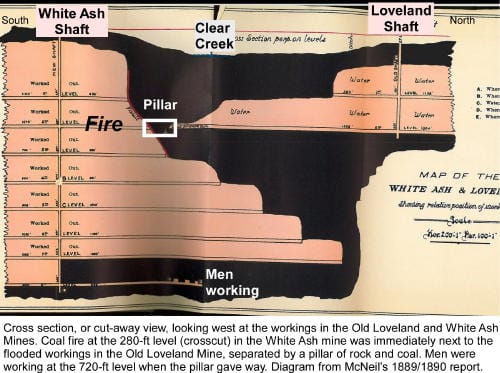
Several hours after water burst through the 280-foot opening into the main shaft, the mine foreman, Evan Jones, and the State Coal Mine Inspector, John McNeil, were lowered down the main shaft in a bucket, trying to reach the trapped miners. Although suffocating carbon dioxide gas and extreme heat forced them to abandon that effort, they discovered that the coal fire was still fiercely burning in the 280-ft crosscut. The fire had never been extinguished. McNeil, in his 1889/1890 report, concluded that the water pressure from the flooded and abandoned Old Loveland Mine, coupled with the coal fire at the 280-ft level in the White Ash Mine, weakened the pillar separating the two workings, leading to the White Ash Mine Disaster. The White Ash Mine workings eventually filled entirely with water to 80 feet below the ground surface, and the Mine closed forever. That flooding extinguished the coal fire, but at an awful human cost.
No other coal fires have ever been reported from now-abandoned coal mines within today’s Golden city limits.
Sources and further reading:
https://www.coloradovirtuallibrary.org/resource-sharing/state-pubs-blog/coal-mine-fires-in-colorado/ An excellent website explaining coal fires in Colorado with links to the 1884 and 1889/1890 State Coal Mine Inspector Reports by John McNeill.
https://libguides.mines.edu/coloradogeology below Lisa Dunn’s photo is a link to: Golden Rocks: The Geology and Mining History of Golden, Colorado by Donna Anderson and Paul Haseman. Among other things the book discusses the White Ash Mine Disaster and coal mining in Golden in Chapter 9. It is a free eBook.
Thanks very much to the Donna Anderson for writing this article!


